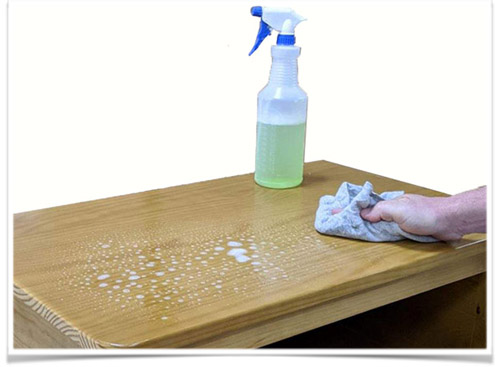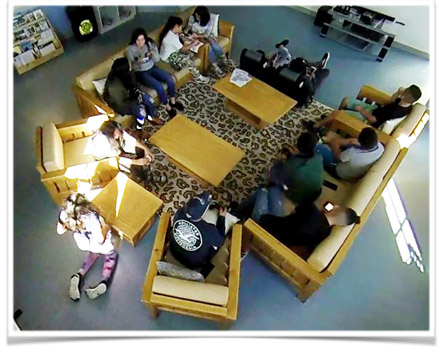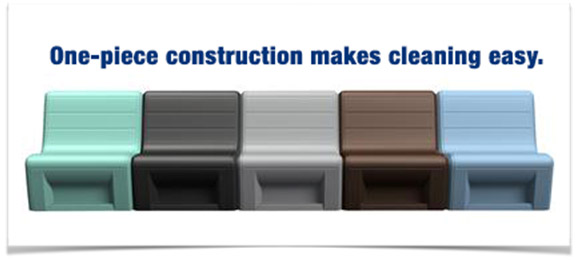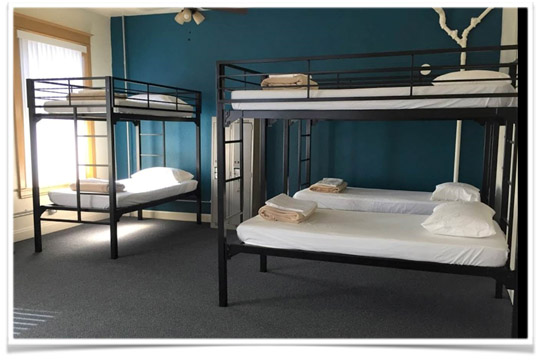Today more than ever it is important that surfaces are well cleaned & sanitized. Seating, storage, bedroom and dining furniture represent the majority of surface areas in any facility. With its frequent use and high visibility, furniture is likely the most important focus of cleaning efforts. And, let’s be honest, furniture is an investment so protecting fabrics and finishes while cleaning is a high priority.

Below we have listed different categories of furniture with safe suggestions on how to keep your furniture clean. Wearing gloves is always recommended when cleaning.
Cleaning Lacquered Wood Furniture
Tough Stuff! is known for its solid wood with lacquer finish. Believe it or not, mild detergent soap and hot water or vinegar & hot water solutions are effective at cleaning hard surfaces. Use a simple 4:1 ratio and apply with a clean, damp rag, (not overly wet). Dry the wood immediately as leaving water on the wood for an extended period might damage the finish.

Cleaning Upholstered Seating
When maintaining upholstered seating for any facility, it is essential to understand proper cleaning methods for your type of upholstery fabric or vinyl. Specialty fabrics and fabric finishes can easily be ruined (and all warranties voided) with the wrong type of cleaning. Unfortunately, most upholstery covers cannot be machine washed or dried under any circumstances.
When in doubt, vacuuming and spot cleaning with a dry brush is the most effective way to clean surface dirt from almost any upholstery fabric. For deeper cleaning, check with the upholstery fabric or vinyl manufacturer for the universally accepted upholstery cleaning & sanitizing codes - W, S, W-S or X. These codes will guide you on the best way to handle your fabric’s cleaning needs while protecting your fabric warranty.

Here is a quick guide to the cleaning codes:
- W. These fabrics are safe to clean with a mild, water-soluble detergent diluted with water. Create a diluted solution and apply with a rag in a circular motion, then rinse thoroughly with clean water. Detergent residue left after cleaning can actually attract more dirt than fabric not previously cleaned so removing all detergent with clean water is an essential step.
- S. These fabrics can only be cleaned using solvent-based products like dry cleaning solutions. The chemicals required for this type of cleaning process can be toxic so this is best left to professionals.
- W-S. As the coding implies, these types of fabrics are generally cleanable with either water-soluble detergents or solvent-based cleaners. As with any upholstery cleaning, test a small spot in a hidden area to make sure that the cleaning results are what you expect.
- X. These fabrics are not able to withstand any sort of cleaning method other than vacuuming and brushing without a high risk of shrinking or fabric damage.
When in doubt, consult your furniture sales expert.
Molded Plastic Furniture
Molded Plastic furniture is one piece construction. Cleaning just requires soap and water* or a mild cleaner. Simply wipe down with water and let air dry, or dry with a soft cloth.

Metal Furniture
Using a soft wet rag with mild soap and water will clean most grime, surface dirt and contaminants. However, be careful to avoid soaking the frame and squeezing water into the openings of the frame. As with wood, metal surfaces are at risk of damage related to water so be sure to dry all metal surfaces with a clean, dry cloth. If you discover any scratches on the metal surface, just contact your furniture provider. Most manufacturers offer a simple patch kit that will make damaged pieces look like new.

*How to Create a Soap and Water Cleaning Solution.
Mix a few drops of mild detergent or soap like Tide into warm water and mix well. A general rule of thumb is 4 parts water to one part soap or detergent. Remember to wipe down the whole piece with a damp rag but do not soak wood & metal pieces. Don’t let the liquid stay on the surface for too long. Dry thoroughly with a soft cloth and, voila, your furniture is clean and ready for the next group!
CDC: Cleaning and Disinfecting Your Home
Blog provided by Furniture Concepts.
The views and opinions expressed by contributors are their own and do not necessarily reflect the views of the American Camp Association or ACA employees.




